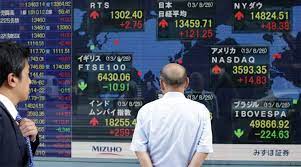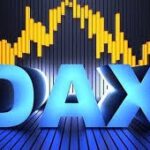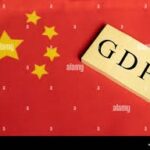
- June 7, 2024
- By: Admin1_blog
- Asia Market, Indices
Lim Hui Jie
Asia-Pacific stocks were mixed on Friday as investors looked at economic data from China and digested Japan’s pay numbers, with markets also assessing the European Central Bank’s rate cut.
China’s May exports beat expectations, climbing 7.6% against the 6% expected by a Reuters poll of economists and vastly higher than the 1.5% rise seen in April. Imports climbed 1.8% year on year, missing the 4.2% expected in a Reuters poll.
Hong Kong’s Hang Seng index reversed earlier gains and fell 0.63% after the trade data announcement, with the mainland Chinese CSI 300 seeing a larger loss of 0.73%
Japan released its household spending figures for April — a key metric to assess if the Bank of Japan’s expected “virtuous cycle” of rising wages and prices was underway.
The average monthly consumption expenditures per household for April was 313,300 yen, up 3.4% in nominal terms and up 0.5% in real terms. This marked the first rise in real household spending since February 2023.
April pay is key to watch as wage hikes commonly take effect during this month, which marks the beginning of Japanese companies’ financial years.
Japan’s Nikkei 225 slipped 0.11%, while the broad-based Topix was down marginally.
South Korea’s Kospi rose 0.84% as investors returned from a public holiday, while the small-cap Kosdaq gained 1.31%.
The Australian S&P/ASX 200 was up 0.41%.
| TICKER | COMPANY | NAME | PRICE | CHANGE | %CHANGE |
|---|---|---|---|---|---|
| .N225 | Nikkei 225 Index | *NIKKEI | 38621.69 | -81.82 | -0.21 |
| .HSI | Hang Seng Index | *HSI | 18399.04 | -77.76 | -0.42 |
| .AXJO | S&P/ASX 200 | *ASX 200 | 7851.1 | 29.3 | 0.37 |
| .SSEC | Shanghai | *SHANGHAI | 3041.79 | -7 | -0.23 |
| .KS11 | KOSPI Index | *KOSPI | 2714.64 | 25.14 | 0.93 |
| .FTFCNBCA | CNBC 100 ASIA IDX | *CNBC 100 | 9744.91 | -7.51 | -0.08 |
Overnight in the U.S., markets remained range-bound as traders looked ahead to Friday’s nonfarm payrolls report for May, with investors on the hunt for signs of a weakening labor market, which could support rate cuts from the Federal Reserve.
The S&P 500 ended Thursday marginally lower, after hitting an all-time intraday high earlier in the day. The Nasdaq Composite inched lower by 0.09%, and the Dow Jones Industrial Average rose 0.2%.
“To me, the market is still saying the economy is fine and not printing anything recessionary,” said Ross Mayfield, investment strategy analyst at Baird. “But it could be the case that the Fed has already been too tight for too long and the momentum of a cooling job market will be hard to stop once it starts.”
— CNBC’s Brian Evans and Samantha Subin contributed to this report.
Samsung Electronics workers’ union to reportedly stage a walkout over pay and work conditions
Samsung Electronics workers’ union will reportedly stage a walkout on Friday over pay and work conditions at the country’s largest conglomerate.
Should the strike go through, this will be the first strike Samsung will face since it’s inception.
Reuters reported that analysts did not expect the labor action to have a major impact on chip production, citing market research firm Trendforce. The company’s shares rose 0.65% on Friday.
Trendforce also noted that the walkout involved more workers at the Samsung headquarters in the capital Seoul rather than those directly involved in production.
— Lim Hui Jie, Reuters
Japan’s household spending rises for the first time since February 2023, but misses estimates
Real household spending in Japan climbed 0.5% year on year in April, rising for the first month since February 2023, but missed Reuters poll estimates of a 0.6% growth.
The average of monthly consumption expenditures per household for April was 313,300 yen, up 3.4% in nominal terms.
The average monthly income per household stood at 566,457 yen, up 2.3% in nominal terms, but down 0.6% in real terms from the previous year.
April’s data is significant as most Japanese companies restart their financial year and enact corporate changes in that month, which means that the record wage increases that unions managed to negotiate this year would most likely take effect from April.
— Lim Hui Jie
CNBC Pro: These outperforming stocks are still set to soar, analysts say, giving one 52% upside
The year has reached its halfway mark — and stocks are still adding on to gains.
The S&P 500 hit yet another fresh record on Wednesday, as did the Nasdaq Composite. That brings the S&P 500 to gain 12.93% year-to-date.
CNBC Pro used FactSet to screen the S&P 500 and the MSCI World index to find out which stocks have already beaten the market this year — but could still come out ahead in the second half of the year and beyond.
— Weizhen Tan
CNBC Pro: Move over Nvidia: Fund manager likes ‘overlooked’ chipmaker with billions in AI chip sales
Chipmaker Nvidia is clearly the poster child for artificial intelligence, according to one portfolio manager — but she says another firm is being overlooked.
″[We] think of Nvidia as the poster child for AI chips – and they are. But, there was another company that posted over a billion in revenue from AI [artificial intelligence] chips,” Clare Pleydell-Bouverie, a portfolio manager at the U.K.-headquartered Liontrust Asset Management, said on CNBC’s Pro Talks last week.
“It’s often overlooked that [it] is the second largest manufacturer of semiconductors industry-wide.”
— Amala Balakrishner
Strong market fundamentals justify a further equity rally, UBS says
The S&P 500 may have notched yet another record high on Wednesday afternoon, but Mark Haefele sees no near-term signs of the rally stopping.
“Fixed income remains our most preferred asset class, but we also believe stocks can advance further,” wrote the chief investment officer of UBS Global Wealth Management. “In our base case, we see the S&P 500 reaching 5,500 by year-end amid Fed rate cuts, robust profit growth, and the secular growth trend brought by artificial intelligence (AI).”
Haefele specified that he still expects 50 basis points of rate cuts by the end of the year, starting sometime in September. He added that he is strategically exposed to technology assets, but also sees an opportunity emerging in small-cap names as the U.S. central bank begins to ease monetary conditions.
— Lisa Kailai Han
Friday may bring ‘longest stretch of sub-4% unemployment since the early 1950s,’ Deutsche Bank says
Friday’s nonfarm payrolls report for May is forecast by economists to show U.S. unemployment at 3.9%, according to FactSet. If the jobless rate comes in at 3.9% or less, that will prove “the longest stretch of sub-4% unemployment since the early 1950s,” according to a research report this week by Deutsche Bank macro strategist Henry Allen.
U.S. unemployment was below 4% for 27 consecutive months in the late 1960s, but the last time there was a run of 28 months or more was the early 1950s, Allen wrote. “Time will tell if the early-1950s offer a good parallel, but if these similarities do hold, there could be a lot of scope for optimism. In particular, low unemployment has often been a spur to productivity growth, as firms find it more difficult to hire workers and become more focused on helping their existing staff to be more productive. Given the growth of AI in our own time, this suggests there could well be some upside risk to economic growth over the years ahead.”
The early 1950s saw a run of 35 months when unemployment was below 4%. That has never been exceeded since.
— Scott Schnipper
Jobless claims, trade deficit rise; labor costs less than expected
Economic data released Thursday morning showed jobless claims and the trade deficit moving higher, while labor costs were less than expected.
- Initial filings for unemployment benefits for the week ending June 1 totaled 229,000, up 8,000 from the previous week and higher than the 220,000 estimate, according to the U.S. Department of Labor. Continuing claims were little changed at 1.79 million.
- The trade deficit for April rose to $74.6 billion, up $6 billion from March but lower than the $76.5 billion Dow Jones estimate, according to the U.S. Census Bureau.
- Revisions showed nonfarm productivity up 0.2% for the first quarter while unit labor costs increased 4%, according to the Bureau of Labor Statistics. Economists were looking for flat productivity and a 5% rise in labor costs.
— Jeff Cox
Source : cnbc



